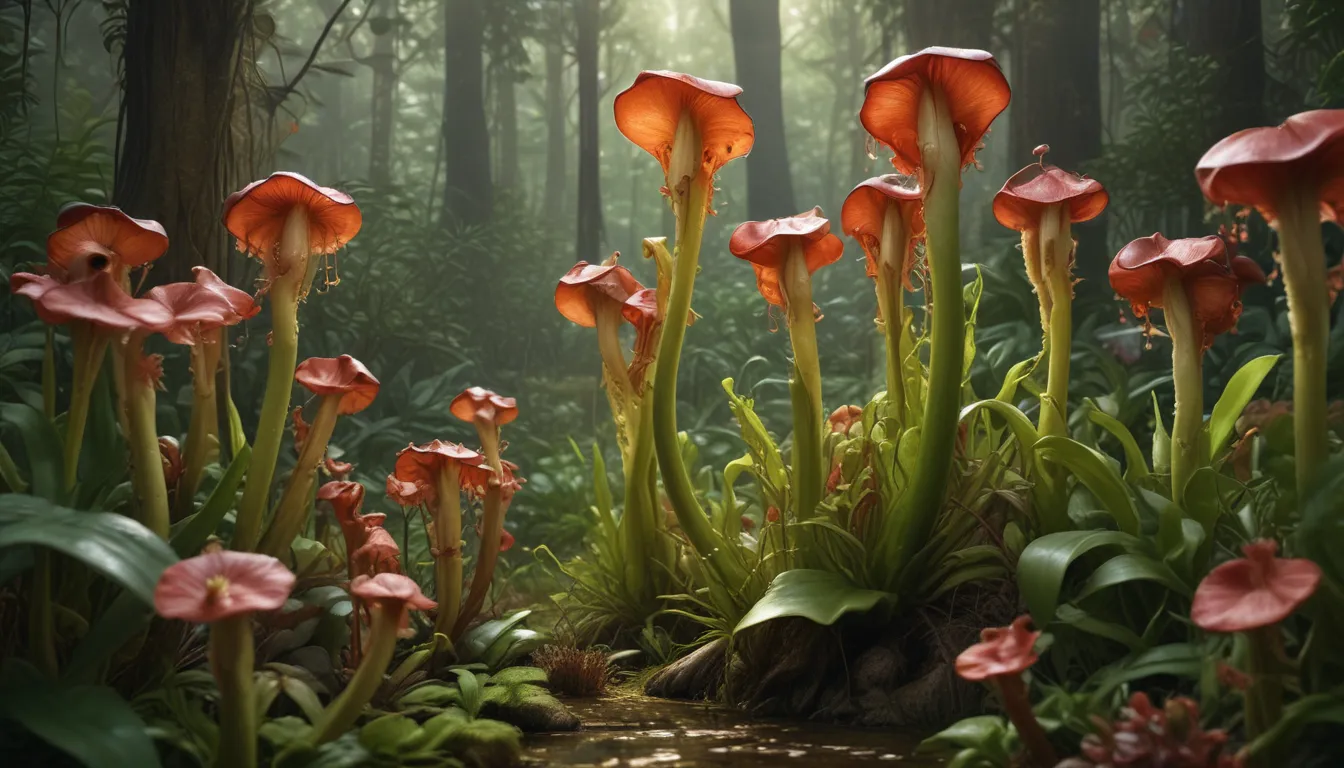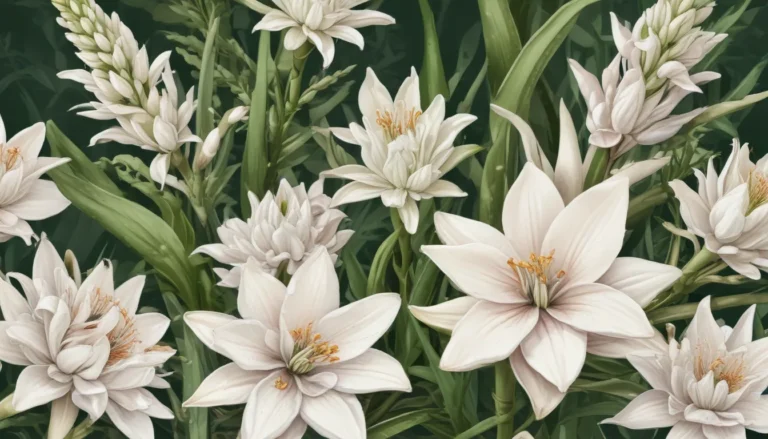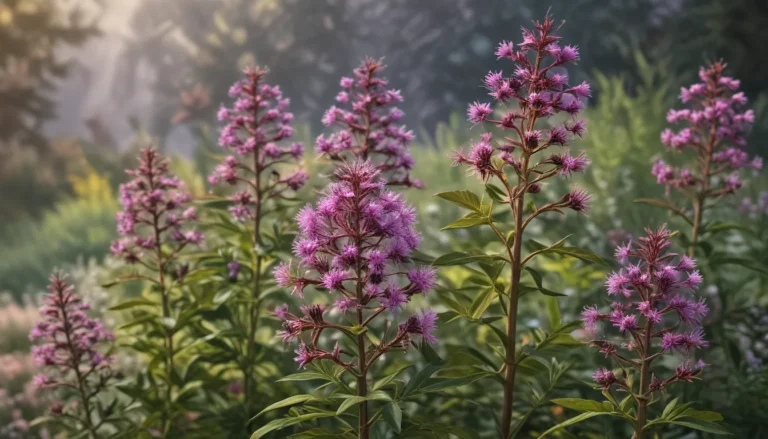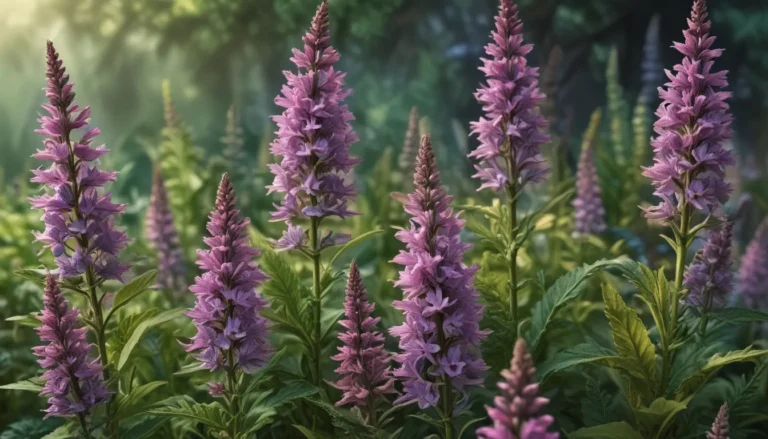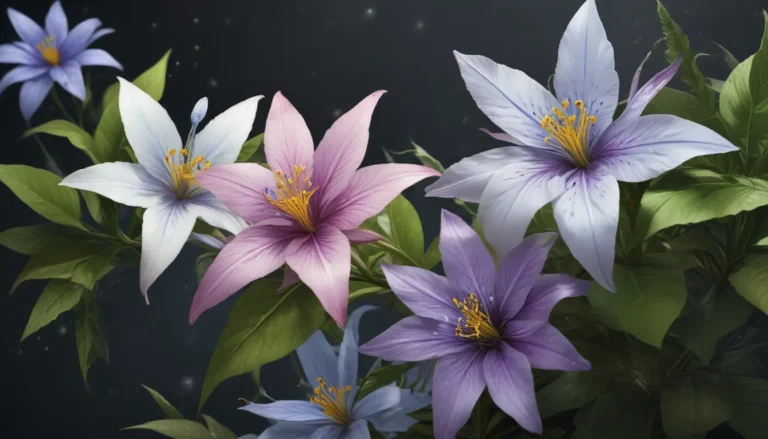The pictures we use in our articles might not show exactly what the words say. We choose these pictures to make you interested in reading more. The pictures work together with the words but don’t take their place. The words still tell you the important facts.
Pitcher plants have long been a source of fascination for botany enthusiasts and nature lovers due to their unique adaptations and carnivorous nature. These remarkable plants possess a variety of features that distinguish them from other plant species, making them a subject of intrigue and wonder. In this article, we will explore twelve extraordinary facts about pitcher plants, shedding light on their captivating biology and behavior.
The Fascinating World of Pitcher Plants
Pitcher plants are expert insect predators, utilizing their specialized pitcher-shaped leaves to capture and digest unsuspecting insects. These leaves act as deadly traps, attracting insects with nectar and vibrant colors, then drowning and digesting them in the fluid within the pitcher. With over 100 known species, pitcher plants come in various shapes and sizes, ranging from tall and slender to short and wide pitchers.
Among the diverse species, the Nepenthes rajah, also known as the giant montane pitcher plant, stands out with the largest pitchers, reaching up to 40 centimeters in height. These plants use multiple trapping mechanisms, including passive trapping where insects fall due to slippery walls and active trapping methods involving hairs, stiff structures, or snapping traps.
Intriguing Adaptations and Behaviors
Pitcher plants form symbiotic relationships with other organisms, such as tree shrews, who defecate into the pitchers, providing additional nutrients for the plants. They have evolved extraordinary digestive enzymes like proteases and chitinases to break down insect exoskeletons, ensuring efficient digestion. While insects are their primary food source, some species also consume other small animals like spiders, snails, and even small rodents.
These plants exhibit remarkable adaptability, thriving in diverse habitats ranging from tropical rainforests to alpine regions and sandy bogs. Bright colors and intricate patterns on their pitchers attract insects, while enticing fragrances further lure unsuspecting prey. Pitcher plants emit scents resembling flowers or decaying matter, deceiving insects and enhancing their trapping success.
Evolutionary Wonders of Pitcher Plants
Pitcher plants are a prime example of convergent evolution, with similar pitcher-shaped structures evolving independently in different species across the globe. Despite geographical disparities, these plants showcase remarkable adaptations and survival strategies, captivating scientists and nature enthusiasts worldwide. It's important to note that the Venus Flytrap is not a pitcher plant, belonging to a different family with distinct trapping mechanisms.
Appreciating the Pitcher Plant’s Exceptional Traits
In conclusion, the pitcher plant's unique ability to trap and digest insects, along with its remarkable adaptations and survival mechanisms, make it a truly extraordinary species in the plant kingdom. Whether it's their deceptive appearance, enticing fragrance, or diverse habitats, pitcher plants continue to intrigue and inspire admiration. Their intricate traps and intricate evolutionary strategies highlight the ingenuity and adaptability of these carnivorous wonders.
FAQs About Pitcher Plants
- What is a Pitcher Plant? A carnivorous plant with modified leaves shaped like a pitcher to trap insects and small prey.
- How do Pitcher Plants catch their prey? By luring insects with nectar, slippery surfaces, and fragrances into their pitcher-shaped leaves, where they become trapped and digested.
- Where are Pitcher Plants found? In regions worldwide, including Southeast Asia, Australia, North America, and South America, thriving in wetlands and bogs.
- Are all Pitcher Plants carnivorous? Yes, they rely on consuming insects for nutrients in nutrient-poor environments.
- Do Pitcher Plants pose threats to humans? Generally not harmful, as larger species may capture small vertebrates but are safe for humans.
- Can Pitcher Plants be grown indoors? Yes, certain species can thrive indoors with specific care requirements like high humidity, indirect light, and distilled water.
Satisfy your curiosity about pitcher plants by delving into additional facts and mark your calendar for World Carnivorous Plant Day on May 1st. This annual celebration honors these fascinating plants and their unique role in the natural world. Explore their captivating world and learn more about these extraordinary carnivorous wonders.
